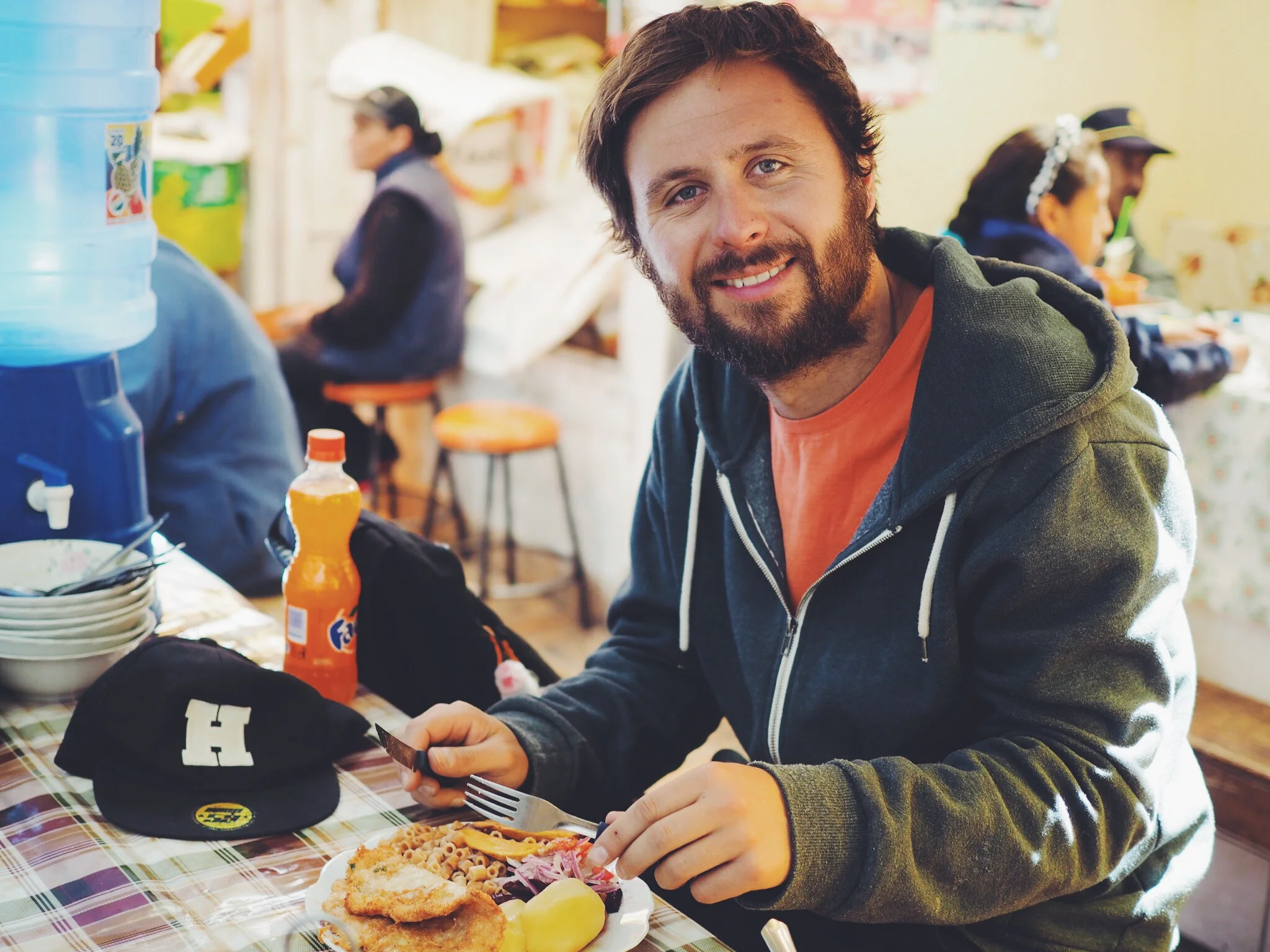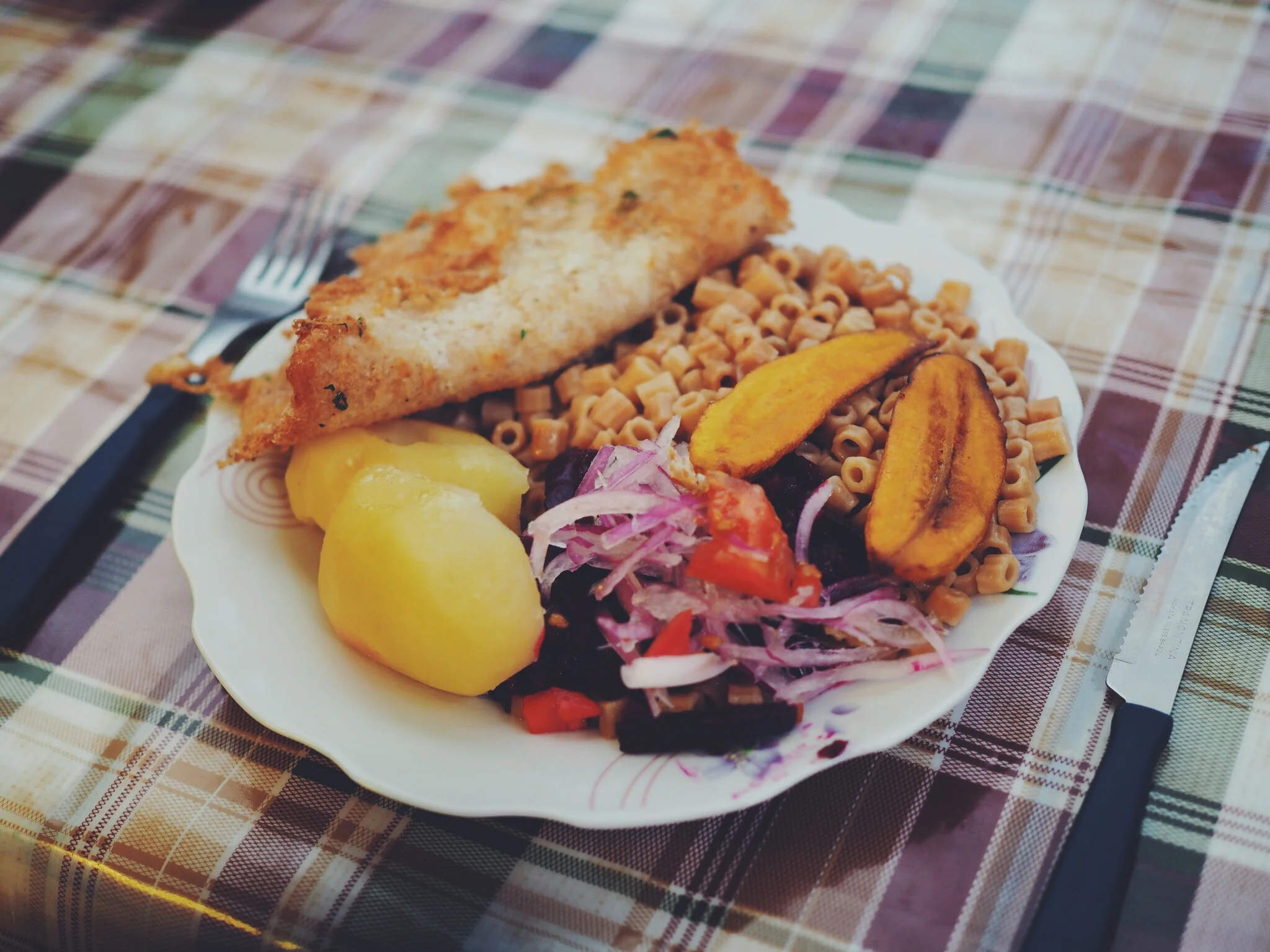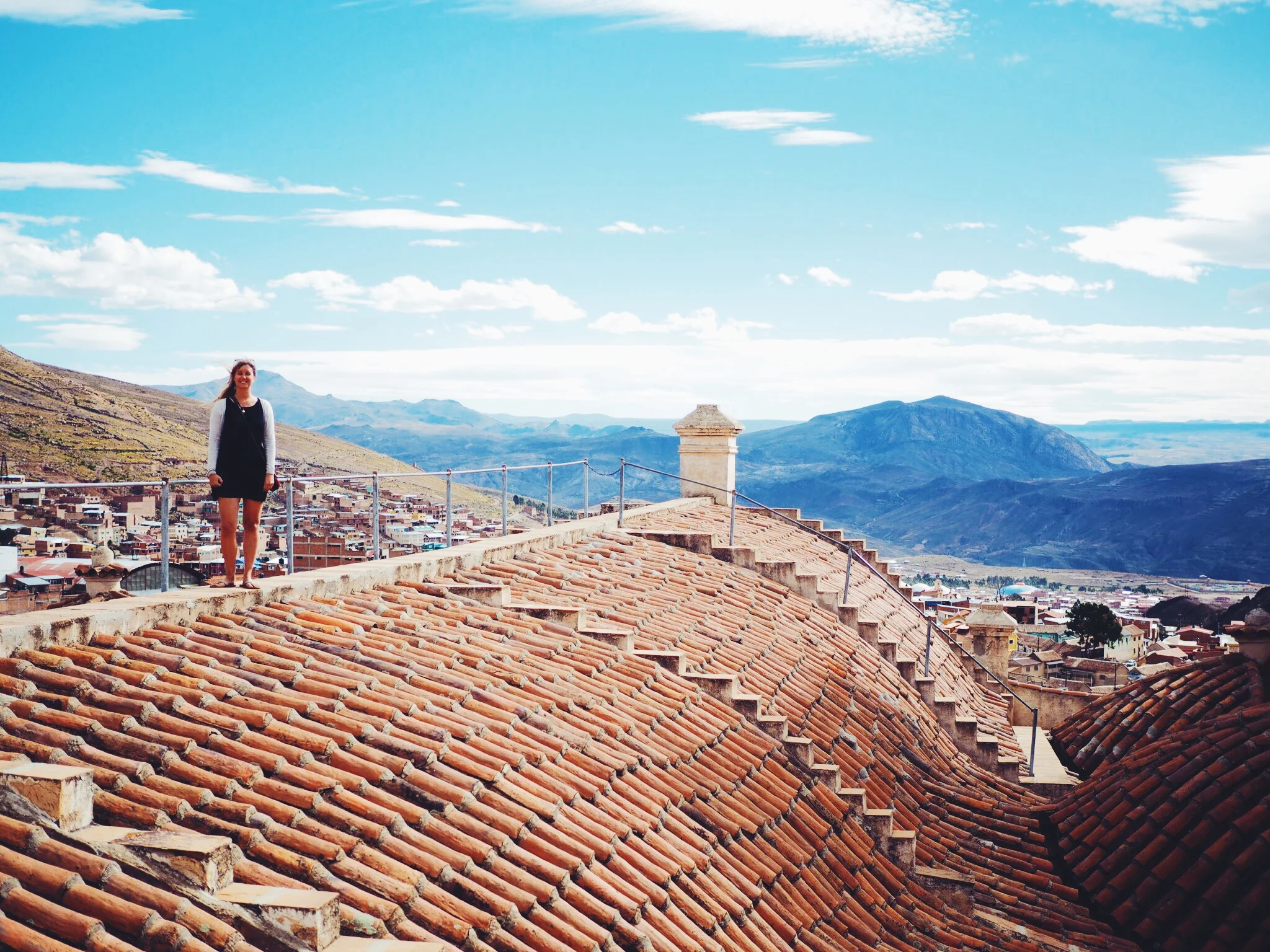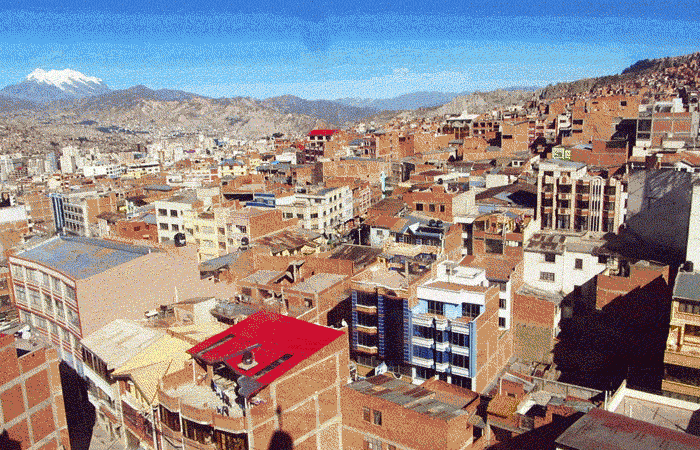Bolivia — Cities In The Clouds
After our incredible 3 day tour from San Pedro de Atacama to Uyuni we journeyed up through Bolivia towards Peru, stopping at a few key cities on the way. Bolivia is home to some of the worlds highest cities, many reaching over 4000m. Even though we had been gently climbing in height since Salta, and in the Salt flats we reached 5000m, we were still curious as to how the altitude was going to affect us. We were really looking forward to experiencing the traditional Bolivian cultures, and as Bolivia is one of the cheapest countries to travel in South America, it was a big relief for our travel budget after our relatively expensive time in Brazil, Uruguay, Chile and Argentina.
Potosi
The first Bolivian city on our list to visit was Potosi, located around 200km north east from Uyuni and positioned at the foot of the famous Cerro Rico mountain, once rich in silver ore. The altitude of Potosi is 4090m, making it one of the highest cities in the world. We arrived in the evening with other members of our salt flats tour group and decided to take the small local bus from the bus terminal to the centre. After cramming onto the tiny bus we made our way to the main square whilst flicking through the guide book for a decent hostel recommendation. As we walked up and down the streets we could definitely feel the altitude, but not long after searching we decided on Hostal Carlos V, which although lacked in atmosphere was still pretty good value.
Potosi has a fascinating history due to the adjacent Cerro Rico mountain, which contained an abundance of silver and tin. Potosi was founded as a mining town over 500 years ago, and by 1672 was one of the richest cities in the world under the rule of the Spanish empire. However, due to low silver prices the mine is now run by a workers collective who extract the remaining minerals from the mines. The working condition are pretty dire, and the life expectancy of the miners isn’t great, yet it has become the main tourist attraction for the city.
We weren’t feeling particularly well due to the altitude, and were also unsure about the voyeuristic nature of the mining tour, so we decided to take it easy and casually stroll around the city, lapping up the beautiful yet run down architecture from Potosi’s glory days. We briefly visited the Casa de la Moneda de Bolivia (one of Bolivia's best museums) where we learned about the historical importance of Potosi’s National Mint where the first coins in South America were made.
We then wondered into the sleepy local market, well stocked with fresh fruit, vegetables and meat and watched the Cholitas (traditionally dressed indigenous women) hard at work. We grabbed a quick lunch of freshly made soup and chicken milanesa at one of the small market kitchens, which was tasty despite being the cheapest meal we’d bought in South America (roughly £1.60 for both dishes!).
After lunch we decided to take a tour of the Museo & Convento de San Francisco after reading that there were great views of the city from it’s very impressive rooftop. For 15 Bolivianos each (£1.50) we had a private tour guide who took us around the convents grounds and into the church, explaining the historic importance of the paintings hanging on the wall in broken Spanglish.
After taking in the interiors we ascended to the rooftop and walked along the narrow path that connected the roof to the central dome. Being amongst the domes and tiles was awesome, and we were really surprised to learn about that the curved terracotta tiles had been moulded from thighs of muscular workers! The view of the city was great, giving a really clear panoramic view of the ageing colonial buildings and the once lucrative Cerro Rico mountain.
We then headed back down and visited the catacombs, which had a subterranean river running through the middle of them. It was pretty creepy seeing so many bones and skulls of past priests, but it rounded off the tour nicely, which despite being short had surpassed our expectations for the price.
We found a couple of days in Potosi was more than enough time to recuperate from our salt flats adventure whilst lapping up the atmosphere of our first Bolivian city. The following day our hostel host explained that it was more cost effective to get a taxi all the way to Sucre rather than a bus, and within 10 minutes a taxi driver had pulled up ready to take us door to door. We had to make a stop to find two extra passengers, but after 15 minutes of our driver shouting ‘SUCRE!” 2 others got in and we were off! It was incredible value, working out at around £5 each, and we drove for around 2.5 hours, descending a few hundred meters in altitude to the city of Sucre.
Sucre
Having read great reviews on Hostel Kultur Berlin we had booked a room a couple of nights in advance, meaning we were able to check in seamlessly on our arrival. Although Kulture Berlin is known to be a party hostel, we were luckily given an amazing little detached studio apartment in the garden area, giving us peace and quiet away from the bar. We spent the afternoon chilling in hammocks, drinking beer, updating our blog and researching the next stretch of our trip.
A few guys we had met on the Salt flats tour had also decided to checked into the hostel on our recommendation, and that night we went out for a simple dinner at the socially conscious Condor Cafe. After dinner we hit the hostels bar and club, which seemed to be one of the most popular in Sucre, with as many locals as tourists knocking back 2-for-one cocktails. It was a great feeling to be able to crash into our quiet little studio right around the corner once we were danced out!
The next day we headed out with Toby, (a friendly German traveler we’d met during our Salt flats tour) to explore Sucre and learn about it’s history. Sucre is the constitutional capital of Bolivia (La Paz being the administrative capital), home to home to the executive and legislative branches of government and where Bolivia first gained its independence. It was a beautiful city, with most its architecture built from white stone, and we really enjoyed wandering around the pretty streets in the sunshine.
There are many churches in Sucre, so once we were ’churched out’ we headed to the Mercado Central, a popular spot for locals to pick up fresh produce. We decided to sample some of the freshly made juices (cheap and delicious in Bolivia) and spent a half hour or so people watching and wandering around the food stalls.
After another very cheap and cheerful market lunch we walked up to La Recoleta hilltop where we found a peaceful bar overlooking the city to have a few beers and lap up the glorious sunshine. Although we had been treated to sun whilst in Bolivia it had been pretty cold, and we were relieved that the climate in Sucre was lovely and warm. Sitting at the top of the hill in deck chairs, overlooking the city with no real agenda made for a very chilled afternoon, and rounded off our 2 day stay in the city perfectly.
La Paz
After our short stay in Sucre we decided to take a night bus to La Paz. It was a white-knuckle ride (probably the hairiest bus journey we’d had in South America) and we unsurprisingly arrived early at a pretty inconvenient time of 5am. We had decided to book a room in Wild Rover Hostel in La Paz the day before, renowned as the party hostel of the city. After getting a quick cab from the bus terminal with two other travellers who were heading the same way, we arrived at the hostel, a little worried we would have to sleep on some chairs and wait to check in. To our luck the room was already prepared when we arrived, and we spent the morning catching up on some much needed sleep.
After a hearty late breakfast at the Wild Rover bar we decided to take a walking tour of the city. This was provided by the Red Cap Tours (another tips based tour) and we met at the Plaza de San Pedro where we learned about the gritty history of San Pedro Prison, and the corruption and drug trafficking that filtered through it's walls. We had read the book ‘Marching Powder’: the tale of a British drug smuggler Thomas McFadden who had spent time in there, and even personally run tours through the prison up until the early 2000's. It was interesting to see the centrally located Prison even from the outside walls, and although though there were still unofficial tours of the prison available, it was strongly recommended that we didn’t take one.
After passing through the central food market our guides explained to us more about Cholitas: broad, hard working, and fascinating women who are the integral workforce of the city. We learnt about the origins of their their iconic bowler hats, which according to the guides were shipped over from Europe in the 1800s to sell to Bolivian men, but as they didn’t fit their heads the merchants devised a plan to sell them to Bolivian women as the ‘height of fashion’ in Europe, and the trend stuck. We then walked on to the Witches Market, where weird and wonderful medicinal remedies overflowed onto the narrow streets. Our guides explained the reasoning behind the rather creepy dead llama foetuses that were strung up in the stalls, apparently which are used as offerings to Pachamama (Mother Earth) and buried under newly built houses to bring good fortune.
The tour ended near the main square outside the beautiful cathedral, and we visited at an Irish bar where we were given a strange Andean drink, and we got chatting to other tour members about their experiences around South America. We found the tour really interesting as it was less about monumental sights and more about the traditions of the people that made up the bustling, culturally rich city of La Paz.
On our second day we decided to take one of La Paz’s brand new bubble lifts to the highest point of the city. As it was another clear day we got great views of the sprawling city and the snow topped Huayna Potosí mountain in the background. Once at the top there wasn’t much to do (unfortunately we had missed the giant El Alto market) so we wandered around and watch more Cholitas hard at work. We had previously learnt that in Bolivia the men tended to be drivers and desk workers and the women are the muscle - this was apparent as we watched a number of Cholitas throwing heavy paving slabs to each other to build a pavement. Overall we found La Paz to be a fascinating city, and a great way to be introduced to Bolivian culture. It was also a great launch pad to do activities such as the infamous Death Road.
Death Road
The North Yungas Road (known as ‘Death Road’) is a popular tourist attraction consisting of narrow, single-lane rocky paths with sheer drops on one side. Its notoriously known as the worlds most dangerous road. Built in the 1930’s, the 69km ‘Death road’ was the only link between La Paz and the Yungus region, and therefore many crowded buses and trucks overloaded with people would fall off the 900m cliffs, with an estimated 300 deaths each year. With the addition of another (safer) road 17 yeas ago, the death toll decreased dramatically, and is now mainly used by cycle tours and a few local daredevils. It’s still treacherous however, and cyclist fatalities tot up to 22 since 1995, the last one being only a week before we arrived. Despite this, we had an urge to overcome our fears and give it a go. We did lots of research on the best tour operator, and decided on Barracuda, one of the longest-running companies.
The following day we were picked up at 6.30am and taken to Little Italy, a small restaurant where we could get a decent cooked breakfast, and checked in with our guide before setting off in a minibus with 7 others. We drove for around an hour, winding up the enormous mountains and stopped at the summit for a rigorous safety briefing. We all got given a bike, which were top of the range with ridiculously sharp breaks and great suspension. Before setting off, we all had to try a sip of 95% proof alcohol, spilling a drop on our tires as an offering to Pachamama (the Andean Goddess Mother Earth).
We set off on the first stretch of the ride, and sped down the smooth, winding tarmac road with an incredible view in front of us. The first 15 minutes down hill were very enjoyable, and didn’t seem too scary at all. We then stopped next to a tunnel, and our guide explained that from here on, it was going to be a lot more difficult. The technique we were told involved letting go of the breaks, leaning back and letting the bike glide over the large boulders, a little counter intuitive once the paths got pretty narrow! After 5-10 minutes of riding we realised that it made sense however, as going slowly with the breaks on was a lot more challenging in terms of balance.
Half an hour later were were fully into the misty, treacherous Death Road experience. With 2m wide lanes and nothing to our left side but clouds and 900-200m drops, we definitely started to feel the fear as we descended down the damp path, dodging boulders and roots and trying not to look down! We stopped at 15 minuted intervals to check everybody was still present (!) and give our sore hands a rest from the blister inducing rattle from the handle bars caused by the steep, rocky road.
About half way through we got a bit more confident, and really started to enjoy the fantastic scenery and challenging mountain biking experience we’d set ourselves. We descended through the clouds into the warmer jungle climate, cycling through waterfalls, muddy sections and splashed across foot-deep river crossings, and after 3 hours we finally reached the bottom, relieved to still be in one piece but thoroughly glad we’d pushed ourselves to do it.
We got back in the minibus and drove to a small jungle lodge where we took a quick dip in the (not-so-inviting) river before we tucked into a buffet lunch with the other tour members and given our free Death Road t-shirt. Despite it being the worlds most dangerous road, we realised that the only danger is people being reckless, and if you treat the road with respect, its easy to have one of the best cycle rides of your life. For us it was an incredible cycling experience, although not one we would be too quick to repeat!
Whilst travelling through Bolivia there were a number of times we were caught short of breath; from hair raising road experiences to the exhausting altitudes of the worlds highest cities. Despite this, we found it to be the most culturally rich and authentic South American country we’d visited, and were surprised at how vibrant and bustling each city was. We particularly enjoyed learning about the Cholita culture, seeing the bountiful markets and taking in Bolivia's impressive mountainous scenery. Although the cities of Potosi, La Paz and Sucre felt relatively similar in terms of atmosphere, each had their own individual characteristics and architecture due to their geography, so after visiting all three we felt we had started to grasp an initial understanding of the fascinating Bolivian way of life.
































































